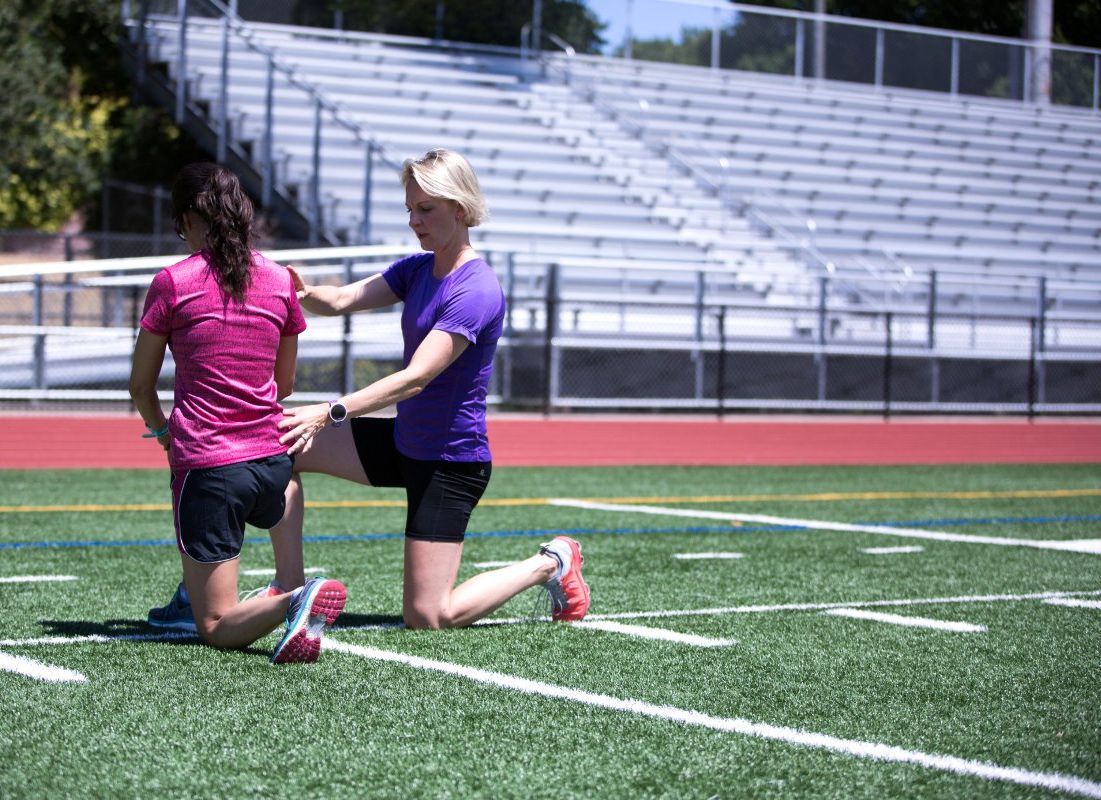Navigating Aches and Muscle Soreness: A Runner's Guide
Muscle pain after running is something that most of us experience from time to time. It’s completely normal to feel a little stiff or achy when you increase your training intensity, either for the first time or after a long break. But how do you know if what you're feeling is just regular muscle soreness from running — and what can you do to alleviate it?
First of all, know that mild or occasional aches after running are normal. You can expect to experience some minor soreness when you train with heavier loads, such as faster paces or the resistance of hills. Building up your mileage may also cause some mild discomfort at first, while your body adapts. Your body needs time to adjust to the new volume of training. Balance that increase in training with good recovery, though, and the subsequent response and adaptations will make you stronger.
As you get better at listening to your body, you’ll learn how it reacts to the workouts you do and what's normal for you. For now, let’s break down some of those aches and pains and how to deal with them.
What is normal post-run muscle soreness?
DOMS, or Delayed Onset Muscle Soreness, is a general feeling of soreness or tightness typically felt in the entire muscle group and about equal on both sides of the body. As a runner, you’ll mostly experience soreness in your hips and legs. Your glutes and hamstrings may feel achy from hill training or faster paces, your quads will bear the load of downhill running, and your calves may tighten up from speed, hills, or moving into low drop shoes. It's also possible to feel next-day soreness in your core or shoulders after a prolonged, hard effort like a race.
To help manage the discomfort, focus on prevention. Hydrate well, and remember to include a dynamic warm-up and proper cool-down. Don't skimp on these! Dehydration, fatigue, and overtraining can all increase soreness and pain after exercising, so make sure you train smart and prepare for every run.
To relieve muscle aches, try gentle foam rolling, dynamic stretching, or heat. Epsom salt baths, hot tubs and saunas can work miracles! Regular sports massages are also excellent both for the prevention of soreness and improved recovery after a hard workout or race.
How recovery runs can relieve fatigue and aches
Don't rush into your next workout if you're feeling sore. However, gentle movement is perfect, and you need to incorporate very easy recovery days into your running routine. These can include rest days, but also easy running days that serve as active recovery. Give yourself permission to go super easy and remember that the purpose of those recovery runs is to simply move your legs and flush your muscles. Do them right, and you’ll feel better at the end of the run than when you started.
Try adding an easy recovery run 1-2 days after a long run or race. Even if running is the last thing you want to do, go just a mile or two at a very (very!) easy pace. You may be surprised to find that your legs feel rejuvenated after a recovery run!
When it’s more than muscle soreness
The D in DOMS stands for “delayed” — it’s something you feel hours later or the following day. If a sharp, new or sudden pain starts when you’re running it is something else.
Pay attention to anything that feels unfamiliar, and stop running if any pain gets worse, feels sharp, or rates higher than 3 out of 10. Identify the pain's location, potential causes, and assess your running habits. Where is the pain? Is there an obvious cause? Did you just launch into a speed workout without warming up properly, or are you taking your brand new shoes on a long run right out of the box? Have you been ignoring a nagging pain for weeks?
Take note if post-workout muscle aches linger and don’t respond to your usual self-care habits. It could mean you're not recovering enough or that you're at risk of developing an overuse injury. Overtraining (or under-recovering) is a real concern if you start experiencing muscle soreness from your typical training load that doesn’t usually give you any trouble.
As a new runner, or if you’re adding mileage, hills, or speed for the first time, you may be more susceptible to overuse injuries such as plantar fasciitis or shin splints.
Don’t ignore pain — the sooner you address it, the faster you can get back to your full training routine.
Worn running shoes that have lost their midsole cushioning could cause mild aches as your body lets you know it's time to replace them. Or if you just got new shoes that are very different from your old ones, loading your body differently, they might alter your running form or highlight an imbalance or weakness.
If you can easily pinpoint a cause, the fix could be straightforward and quick.
Drink more water, and break in those shoes gently. Spend a few extra minutes warming up; use a foam roller; stretch it out. Dial back on the intensity and build up more gradually. Take an extra rest day and catch up on your sleep.
If you’re in tune with your body and listening to the clues it’s giving you, your intuition will tell you if it’s time to seek help.
What to do if you’re in doubt
If you don’t recognize the pain you’re experiencing, see an expert before it becomes chronic or turns into an injury. Dr. Google doesn’t know your health and running history and is far from the best place to get a diagnosis.
Ask for recommendations and find your trusted team of experts. That team should include soft tissue, movement and injury specialists like a physical therapist, sports medicine doctor, sports massage therapist, chiropractor, and/or acupuncturist. Use them not just for the treatment of pain but also preventatively to support your training.
With a holistic approach, good prevention strategies and smart training habits, you can avoid a lot of aches and pains altogether and keep your running pain-free and enjoyable!
About the author:
Heini Tallent is an RRCA Level 2 certified running coach and licensed sports massage therapist. She's the owner of Elements Running Education and helps recreational runners aged 40ish and up train with more confidence, higher motivation, and the knowledge needed to make running a healthy and enjoyable lifelong journey. Heini coaches her clients 1-on-1, through small group programs and the Run Empowered online community for women. She also works with everyday athletes and active people at her private massage practice near Portland, Oregon.
RRCA running coach in Oregon, USA
Online run club for women
Running programs for recreational runners
Running technique coaching




